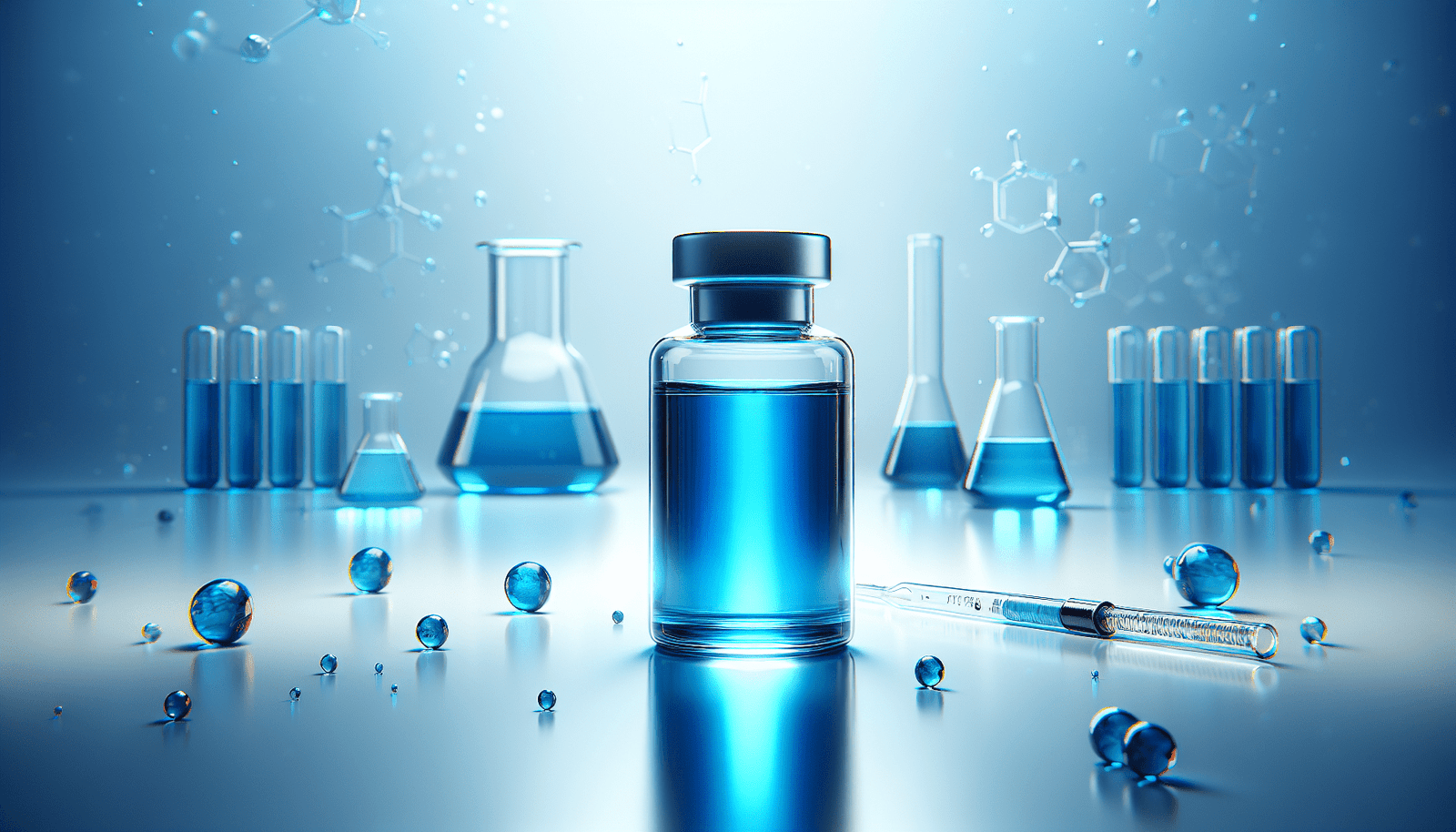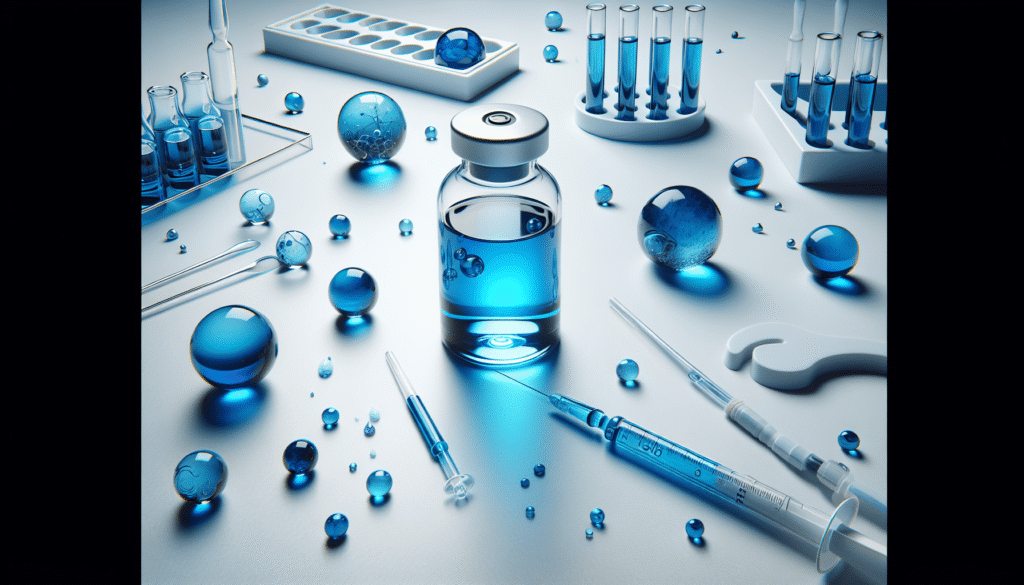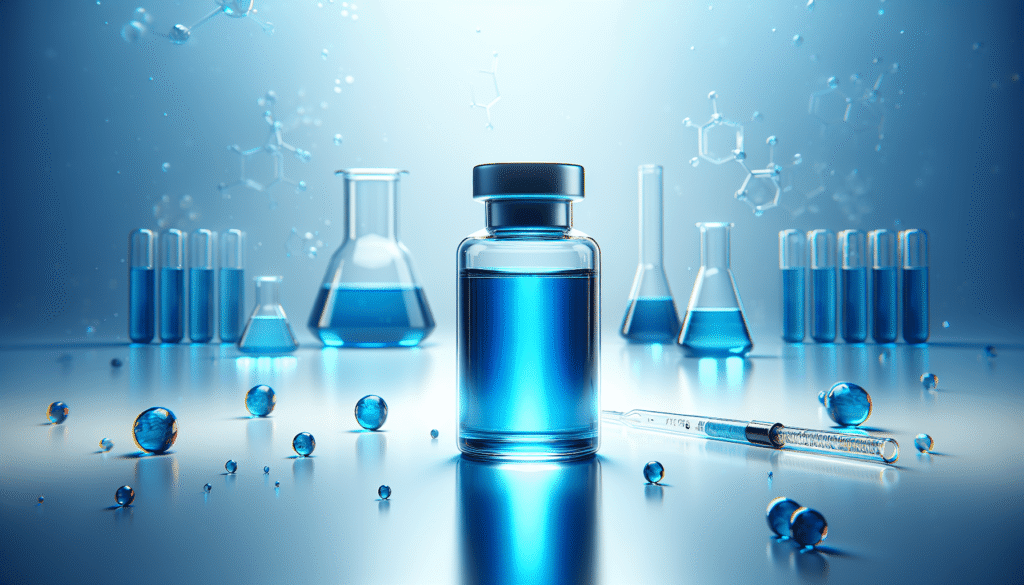
What do you know about Methylene Blue? This compound, often overlooked, holds a wealth of potential across various fields such as medicine, biology, and even environmental science. Understanding Methylene Blue could provide you with insight into its applications and benefits. This comprehensive guide aims to demystify Methylene Blue, making it accessible for those who may be unfamiliar with its characteristics and uses.
What is Methylene Blue?
Methylene Blue is a synthetic dye with a rich history dating back to the late 19th century. It is known for its distinctive blue color and has a variety of applications ranging from biological staining to medicinal use. Your understanding of this compound begins with its chemical identity—specifically, it is a thiazine dye derived from coal tar.
Chemical Structure and Properties
Methylene Blue is scientifically known as thionine, and its molecular formula is C16H18ClN3S. The compound is water-soluble and has a high affinity for biological tissues, which is primarily why it is used in various laboratory settings. When you consider its properties, think about its ability to absorb light in the visible spectrum, making it a useful indicator in several scientific applications.
Table 1: Chemical Properties of Methylene Blue
| Property | Value |
|---|---|
| Molecular Formula | C16H18ClN3S |
| Melting Point | 100-102°C |
| Solubility | Soluble in water |
| Color | Blue |
| Absorption Max | 665 nm |
Historical Context
The journey of Methylene Blue began in 1876 when it was first synthesized by Heinrich Caro. Initially, it was used as a dye for textiles, but its utility was soon recognized in various other fields. The discovery of its medicinal properties expanded its use in laboratories and hospitals.
Evolution of Uses in Medicine
In the early 20th century, Methylene Blue found its way into medicine, primarily as an antimalarial treatment. You might be surprised to learn that it has undergone various uses in pharmacology, including its application in the management of methemoglobinemia, a condition affecting the blood’s ability to carry oxygen.

Applications of Methylene Blue
Methylene Blue’s versatility is one of its defining features. It serves several purposes across multiple sectors, and it is crucial for you to understand these applications to fully appreciate the compound’s significance.
Medical Applications
Methemoglobinemia Treatment
One of the primary medical uses of Methylene Blue is for treating methemoglobinemia. This condition arises when hemoglobin is altered, impairing its capacity to transport oxygen. By administering Methylene Blue, you can chemically convert methemoglobin back to functional hemoglobin.
Antimicrobial Properties
Methylene Blue also exhibits antimicrobial properties. It has shown efficacy against various pathogens, including certain bacteria and fungi. This characteristic has led to its exploration in treating infections, particularly in cases of chronic wound management.
Laboratory Uses
Biological Staining
In laboratories, Methylene Blue is often employed as a biological stain. It allows scientists to visualize cells and tissues under a microscope. Its affinity for nucleic acids makes it particularly useful in assays that involve DNA and RNA, aiding in research and diagnostics.
Redox Indicator
You may find Methylene Blue utilized as a redox indicator in titrations. Its color change, from blue to colorless, serves as a visual cue, making it easier for researchers to determine chemical processes.
Environmental Science
Methylene Blue plays a role in environmental science as well. Its ability to bind to heavy metals has been harnessed in water treatment processes, where it can help in detecting and removing pollutants. This application is crucial in addressing water quality issues that affect ecosystems and human health.
Mechanism of Action
Understanding how Methylene Blue functions at a molecular level can enhance your appreciation for its applications. Its redox properties play a critical role in its behavior within biological systems.
Role as an Electron Donor
In therapeutic contexts, Methylene Blue acts as an electron donor. It participates in redox reactions, facilitating the conversion of methemoglobin back to hemoglobin. This characteristic underscores its importance in emergency medical settings when rapid intervention is required.
Interaction with Biological Molecules
Once introduced into the body, Methylene Blue interacts with various biological molecules. It has a particular affinity for nucleic acids and proteins, which is beneficial in laboratory settings but may also carry implications for its pharmacological effects.
Table 2: Mechanism of Action
| Action | Result |
|---|---|
| Electron Donation | Reduction of methemoglobin to hemoglobin |
| Binding to Nucleic Acids | Enhances visualization in microscopy |
| Interaction with Proteins | Potential antimicrobial effects |

Safety and Side Effects
As with any compound, understanding the safety profile of Methylene Blue is essential. While it holds significant promise in various applications, potential side effects and contraindications must be taken into account.
Dosage Considerations
- Recommended Dose: The typical dose for treating methemoglobinemia in adults is 1-2 mg/kg administered intravenously.
- Administration: It is crucial to administer Methylene Blue cautiously, as rapid injection can lead to adverse effects.
Potential Side Effects
While many individuals tolerate Methylene Blue well, some may experience side effects such as:
- Nausea and vomiting
- Headache
- Confusion
- Urine discoloration (blue or green)
Table 3: Side Effects of Methylene Blue
| Side Effect | Description |
|---|---|
| Nausea | Upset stomach or vomiting |
| Headache | Discomfort in the head region |
| Confusion | Altered mental status or disorientation |
| Urine Discoloration | Change in urine color to blue or green |
Contraindications
Certain populations should exercise caution or avoid Methylene Blue entirely:
- Individuals with hypersensitivity
- Patients taking serotonergic medications (risk of serotonin syndrome)
- Pregnant and breastfeeding women without medical justification
Alternatives to Methylene Blue
While Methylene Blue serves various roles, it is vital to recognize that alternatives exist. You might consider these options based on specific contexts and uses.
Other Dyes for Biological Staining
Several alternatives can be used for biological staining, such as:
- Crystal Violet: Used in Gram staining of bacteria.
- Giemsa Stain: Useful for blood smears and cytology tests.
Other Treatments for Methemoglobinemia
Aside from Methylene Blue, alternative treatments exist for methemoglobinemia:
- Ascorbic Acid (Vitamin C): Serves a similar reducing function.
- Hyperbaric Oxygen Therapy: Increases oxygen delivery in severe cases.
Current Research and Future Directions
The scientific community continues to explore new applications for Methylene Blue. Understanding ongoing research can allow you to appreciate its potential better.
Novel Therapeutic Uses
Researchers are investigating Methylene Blue as a potential treatment for various conditions, including:
- Neurodegenerative Diseases: Preliminary studies suggest it may have neuroprotective effects in conditions like Alzheimer’s.
- Cancer Therapies: Its ability to induce apoptosis in cancer cells is being explored as a treatment avenue.
Environmental Applications
Future directions in environmental science involve leveraging Methylene Blue’s properties for more efficient water treatment methods. Researchers are investigating its effectiveness in removing pharmaceuticals and contaminants from wastewater.
Conclusion
Methylene Blue is a multifaceted compound with a storied history and wide-ranging applications. From its medicinal uses in treating methemoglobinemia to its role in laboratory settings and environmental science, understanding Methylene Blue enhances your comprehension of its numerous benefits.
Why Knowledge is Power
The more you know about Methylene Blue, the more you can appreciate its significance in both scientific and health contexts. As research continues to unveil its potential, staying informed on this compound can help you navigate the complexities of both medicine and environmental science effectively.